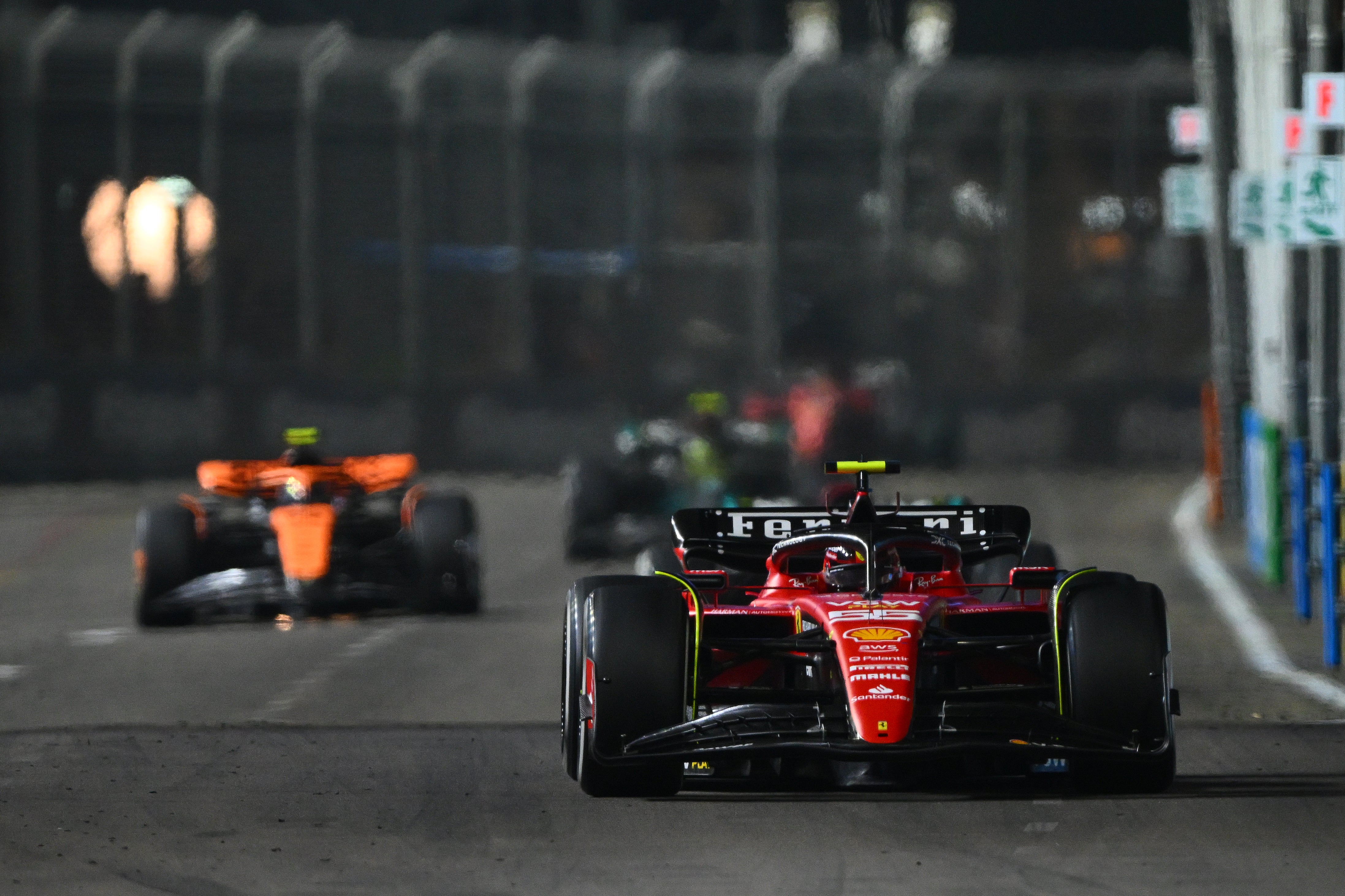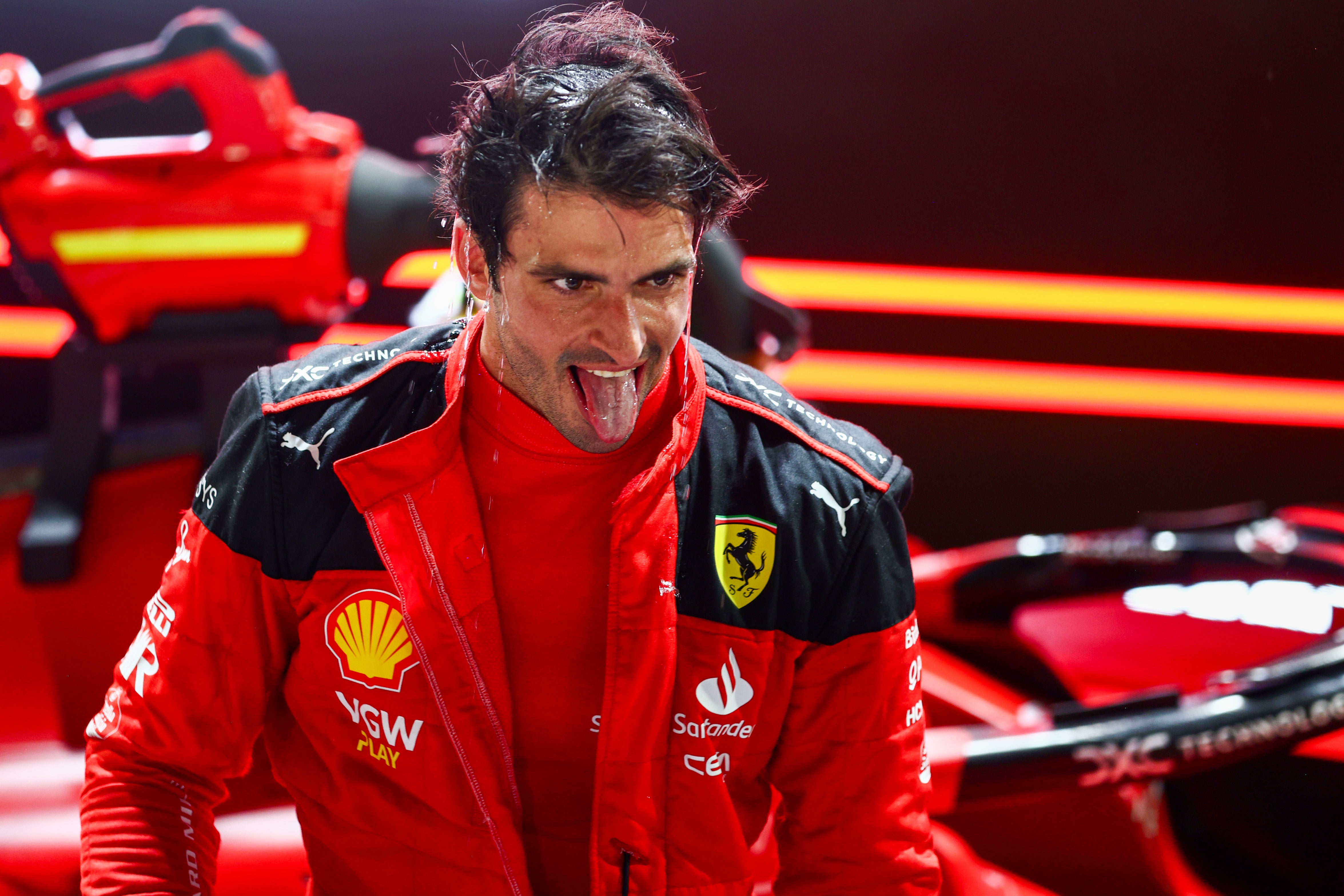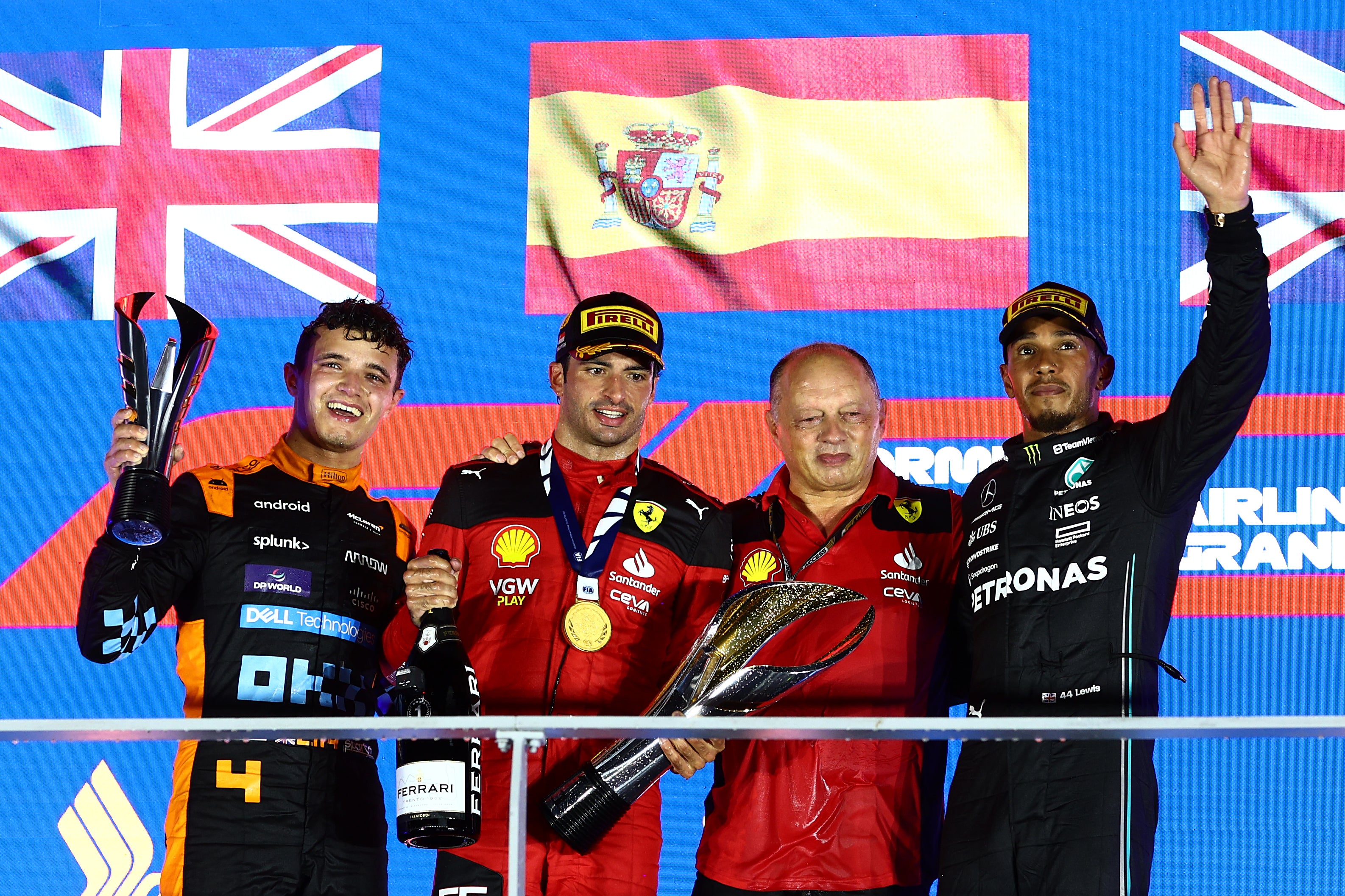Ferrari finally find their chief strategist – and it’s Carlos Sainz
Sainz was the standout driver all weekend in Singapore and clinched a brilliant victory with a late masterstroke
Your support helps us to tell the story
From reproductive rights to climate change to Big Tech, The Independent is on the ground when the story is developing. Whether it's investigating the financials of Elon Musk's pro-Trump PAC or producing our latest documentary, 'The A Word', which shines a light on the American women fighting for reproductive rights, we know how important it is to parse out the facts from the messaging.
At such a critical moment in US history, we need reporters on the ground. Your donation allows us to keep sending journalists to speak to both sides of the story.
The Independent is trusted by Americans across the entire political spectrum. And unlike many other quality news outlets, we choose not to lock Americans out of our reporting and analysis with paywalls. We believe quality journalism should be available to everyone, paid for by those who can afford it.
Your support makes all the difference.The twitchiness on the Ferrari pit wall was palpable. With five laps to go at the end of Sunday’s thrilling Singapore Grand Prix, less than two seconds separated race leader Carlos Sainz, in first, from Lewis Hamilton in fourth. McLaren’s Lando Norris, in second, was closing in, within the critical one-second DRS range. The warning from Sainz’s race engineer Riccardo Adami was quick: “Lando, 0.8 (seconds) behind with DRS.”
But the Spaniard was a step ahead, deploying a meticulous balancing act which ultimately secured his second Formula One victory. “Yeah, it’s on purpose,” he replied. At which point it all made sense.
For a team chasing its first victory in over a year, often maligned for their clangers in the strategy department, all it took was a clear sense of thought and direction from the driver in the cockpit. Sainz was not overly concerned with Norris’ pace behind him. On the contrary, the double threat posed by Mercedes’ George Russell and Hamilton, lapping over a second-a-lap quicker on fresh tyres in third and fourth, was the main focus of his thinking.
What a fine balancing act it was. Keep Norris close enough behind him – one second – to give him a crucial speed boost on the straights to defend from Russell, but not so close that Norris himself could make a move for the top spot. In the end, it was a masterstroke which worked to perfection.
“I knew more or less my pace versus Lando and how difficult it is to overtake here,” Sainz explained afterwards. “I knew he was on a hard and if George and Lewis were going to overtake, I would be dead meat also. So I needed him to hold on for as long as possible.
“[For] a couple of laps I was 1.2 or 1.3 seconds ahead of Lando so I slowed down a bit to give him DRS into turn seven, which was just enough for him to hold onto them and keep my race under control. Not easy, because you are putting yourself at risk and you cannot [make] any mistakes, but it was my strategy and it worked.”
Ferrari boss Fred Vasseur, beaming after securing his first win at the helm of the Scuderia, confirmed the ploy was Sainz’s idea. “He knew he was more at risk with Mercedes than with Norris,” the Frenchman said. “With Norris, we had the same tyres and almost the same pace from lap one. We were not really at risk with Norris except if we lost the tyres, so it was a clever move from Carlos to keep Norris into the DRS.”


It was fitting that Norris was the beneficiary, too. Sainz and the Brit were teammates at McLaren for two years and are still close friends. Norris admitted that the DRS boost was “very generous” and despite finishing 0.812 seconds behind first place, was delighted with a ninth career podium. Still, that first win continues to elude him.
As for Russell? The desire, bordering on desperation, to win in the end was his undoing. A light tip with the wall derailed his Mercedes on the final lap, slamming into the wall. It was a harsh, dramatic conclusion to the 62-lap, high-humidity race for the Brit, with Hamilton instead taking the final podium spot. Mercedes boss Toto Wolff insisted post-race that it would be an “arm round the shoulder” approach rather than any in-depth post-mortem. Quite right too, given Russell’s bold approach almost gave him a brilliant come-from-behind victory.
But, more so than Russell’s mistake and Sainz’s mastery, what Sunday really showed us – quite depressingly in a way – is what this season could have looked like. With Red Bull startlingly out of the picture – impacted by a lack of tyre grip and car balance on a notorious outlier of a circuit on the F1 calendar – the ensuing battle between Ferrari, McLaren and Mercedes was enthralling to watch. The battle behind the No 1 team has been tight all year. Only this time, it was for first place.

The Marina Bay Street Circuit spelt the end of Max Verstappen’s win streak and talk of an unprecedented perfect season for Red Bull. The flying Dutchman, who finished fifth after starting in 11th, can’t now clinch his third world title in Japan this weekend, with his crowning moment likely to come a fortnight later in Qatar.
Yet, a return to a typical circuit at Suzuka will likely see Christian Horner’s team return to the top. Ferrari’s pace uptake in the last two races, having taken pole position in Monza two weeks ago too, has undoubtedly created a sense of intrigue, a spark of something different in a season of Red Bull domination.
Moving forward, though, there is plenty to learn and maintain for Ferrari after Sainz’s supreme Sunday drive. No more should chaos reign in the strategy department. No more should “Plans A-F” be bawled out over team radio, confusing drivers and spectators alike. No more should Sainz and Charles Leclerc sit idly by while choices on the pit wall dampen their aspirations.
Sometimes it’s best to keep things simple – and leave the in-race decisions to the men behind the wheel. The team’s hunt for chief strategists was easier than they thought.




Join our commenting forum
Join thought-provoking conversations, follow other Independent readers and see their replies
Comments